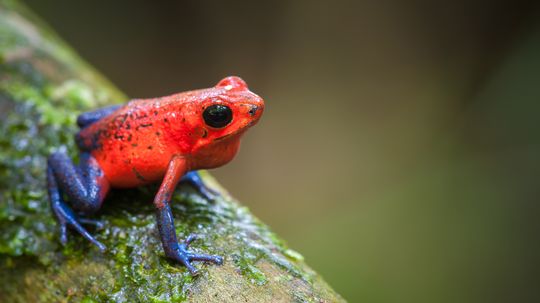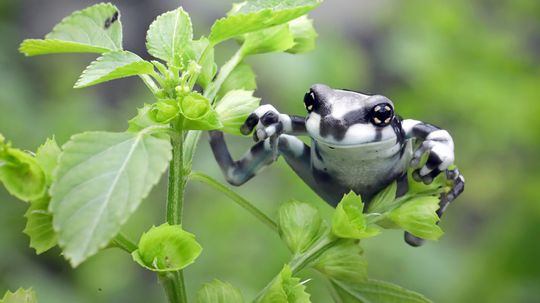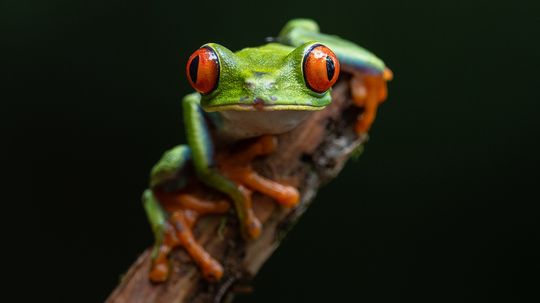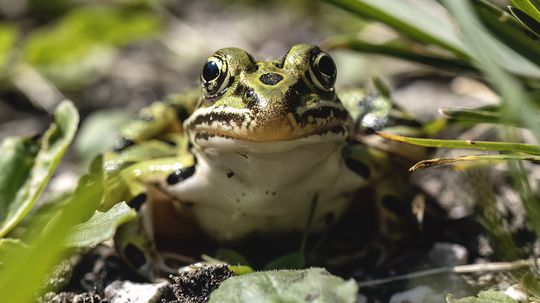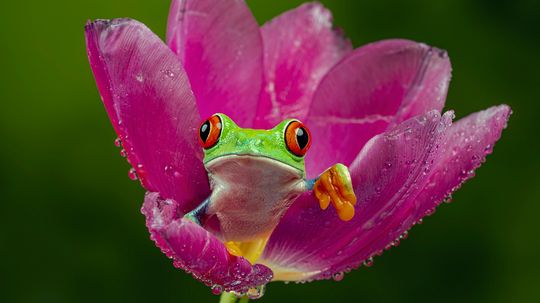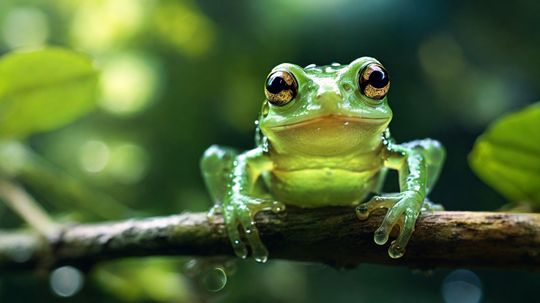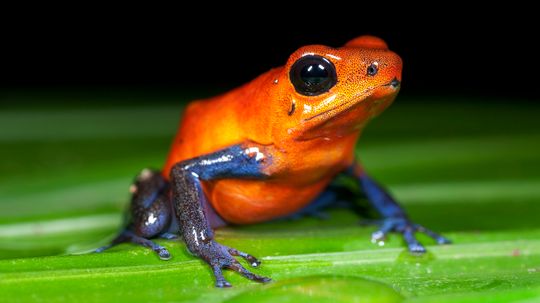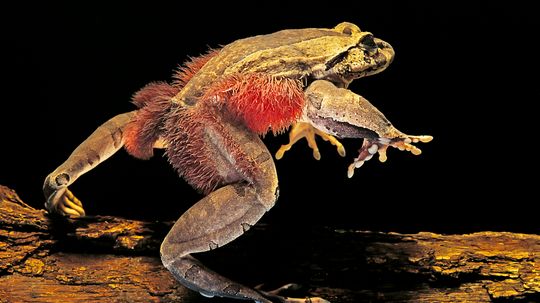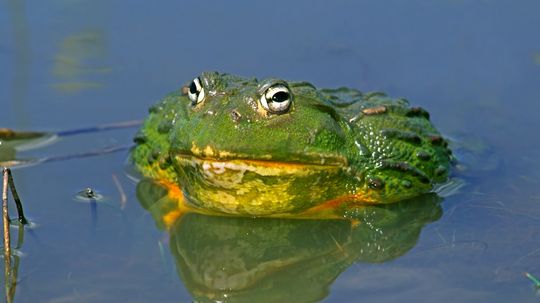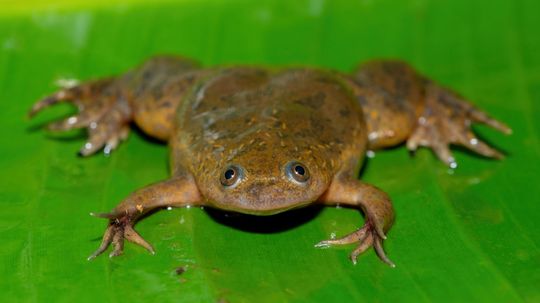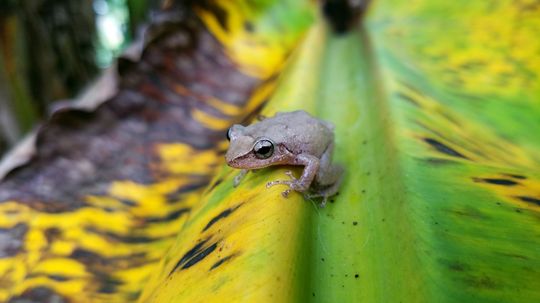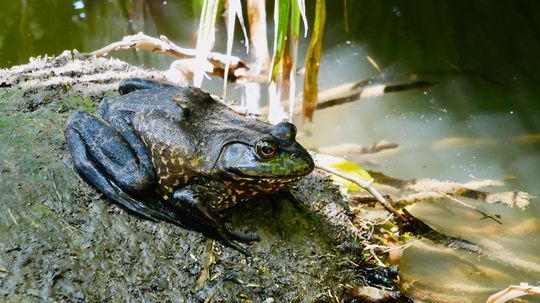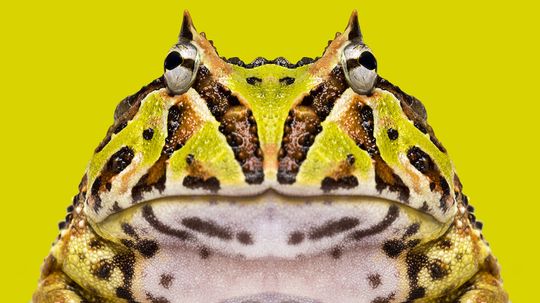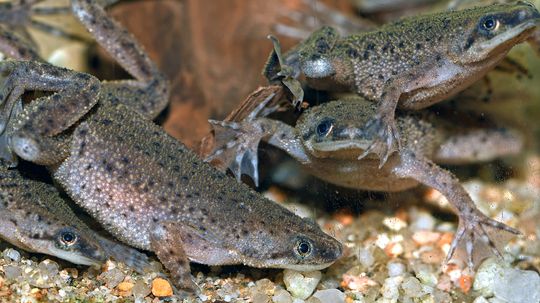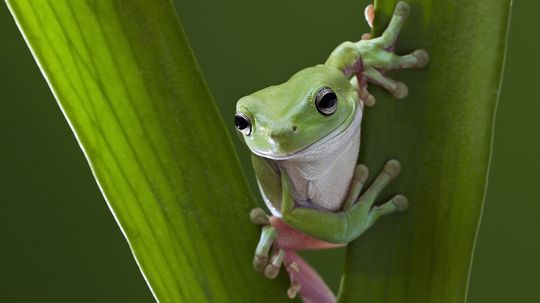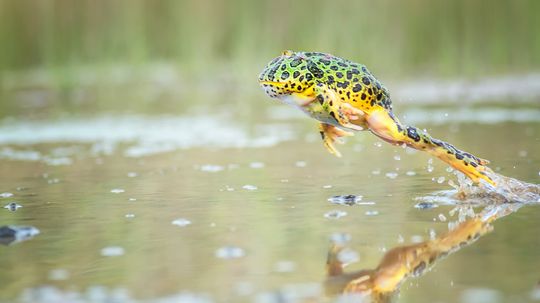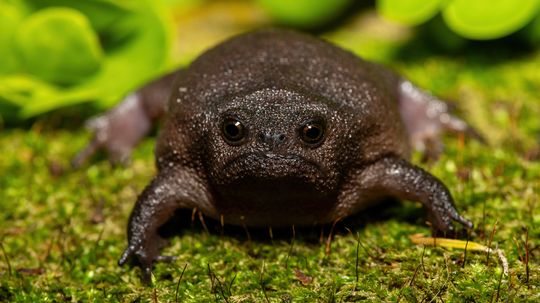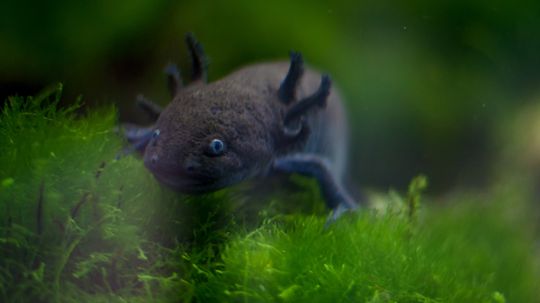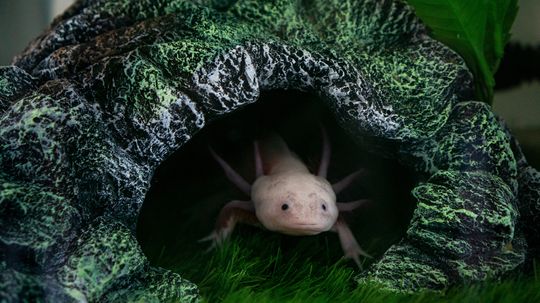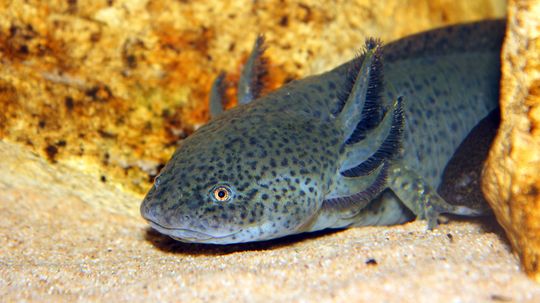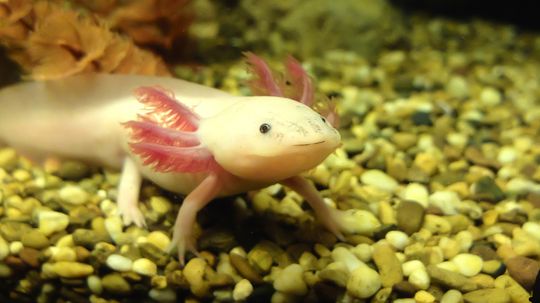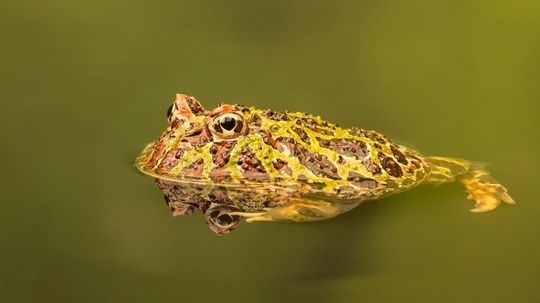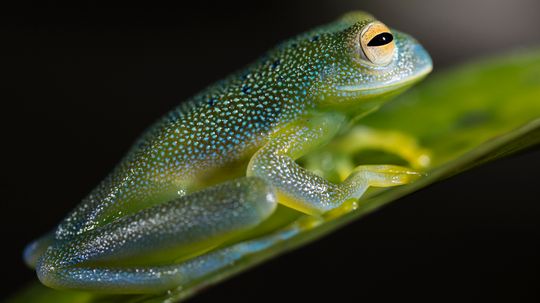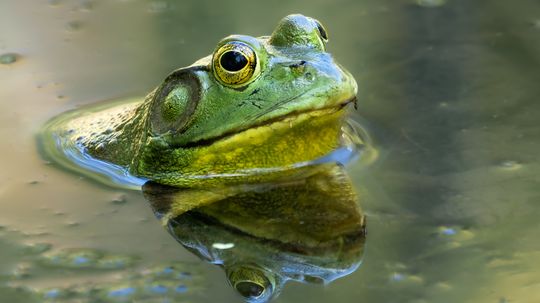Amphibians
Amphibians are cold-blooded animals that usually split their time between using their lungs on land and breathing with gills underwater. Learn about the three groups of amphibians which include frogs and toads, newts and salamanders and caecilians.
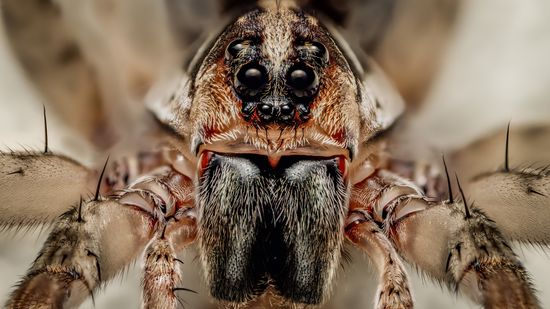
What Is a Group of Spiders Called? (Aside From Icky)
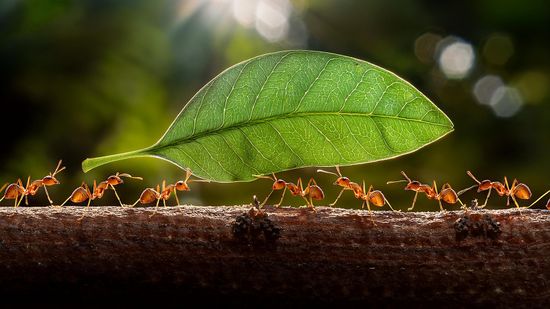
What Is a Group of Ants Called? Army vs. Colony vs. Swarm
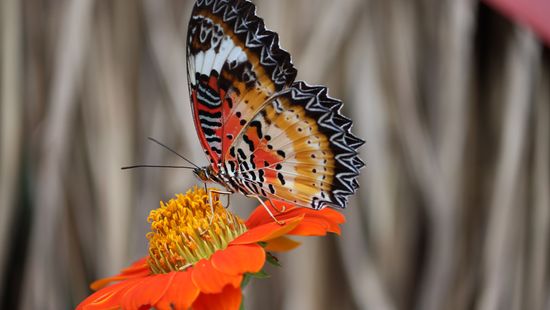
10 Red Butterfly Species Found From India to Florida to Europe
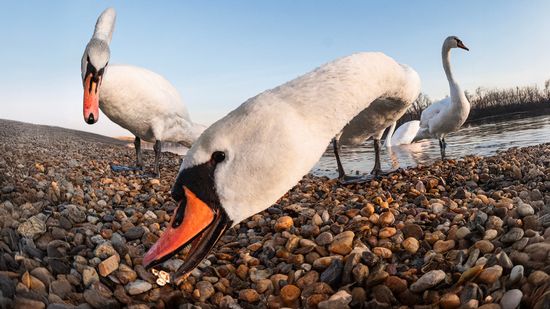
What Is a Group of Swans Called? Not a Flock
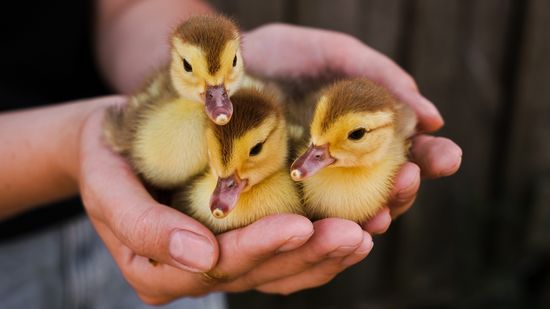
What Is a Group of Ducklings Called? It's Surprisingly Moody
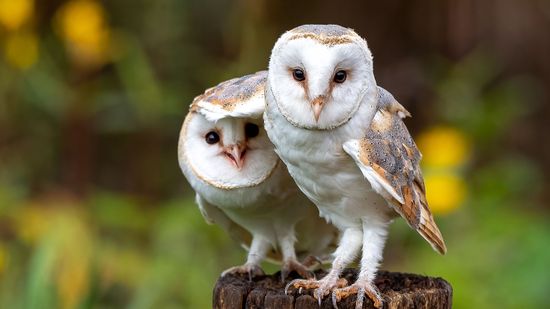
What Group of Birds Is Called a Parliament?
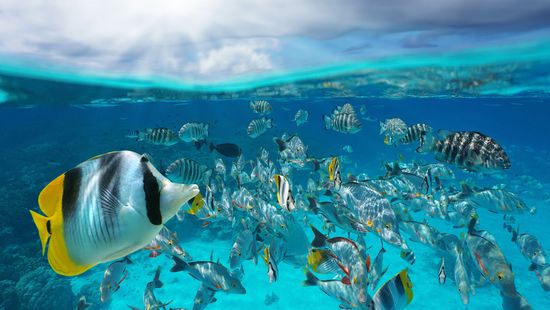
What Is a Group of Fish Called? Not Always a School
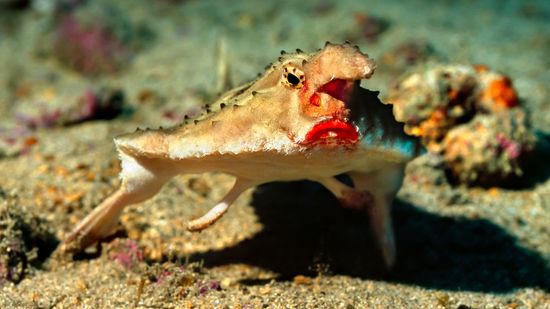
10 Weirdest Fish in the World: Batfish, Hairy Frogfish, and More
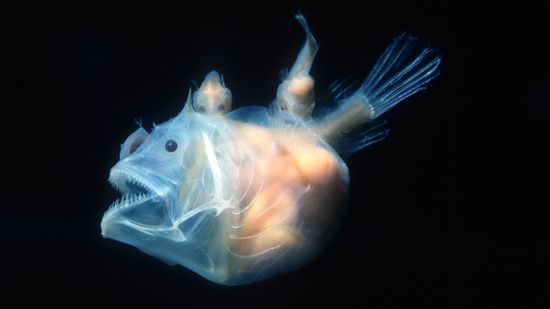
10 Scariest Fish Lurking in Rivers, Deep Ocean Waters, and Shells
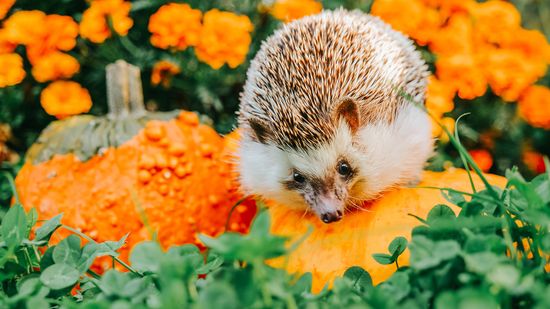
What Is a Group of Hedgehogs Called? It's Adorably Appropriate

What Is a Group of Otters Called? The Official Terms Are Adorable
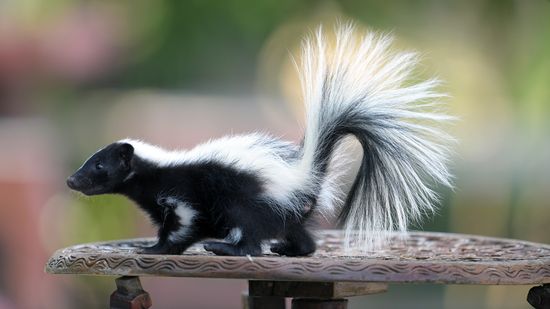
What Is a Group of Skunks Called? Here's Why You've Never Asked Before
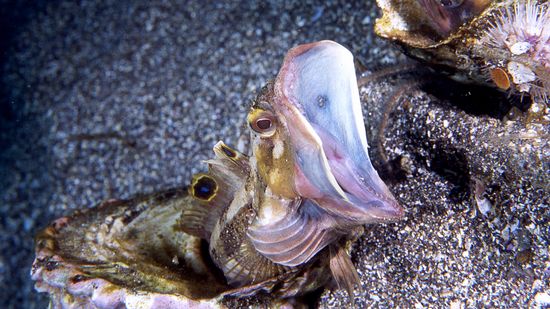
10 of the Scariest Sea Creatures Lurking in the Ocean's Depths
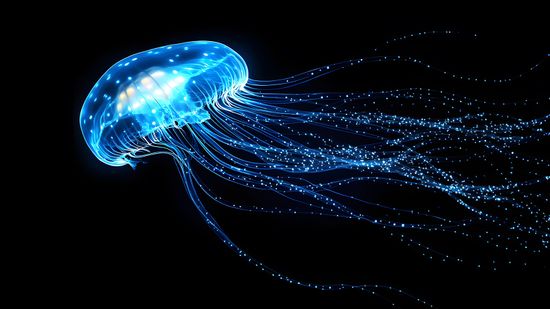
How Bioluminescent Jellyfish Get Their Signature Glow
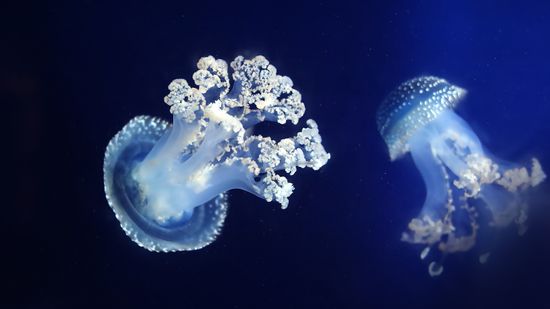
White Spotted Jellyfish: Cute Until They Become Invasive
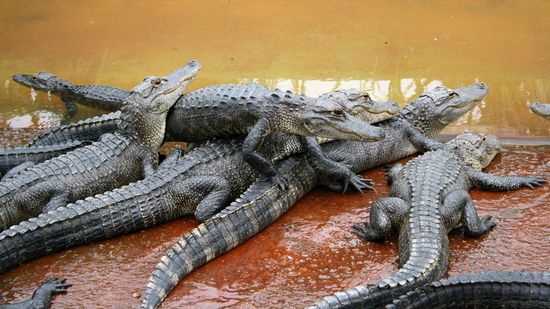
What Is a Group of Alligators Called? It Sounds Surprisingly Formal
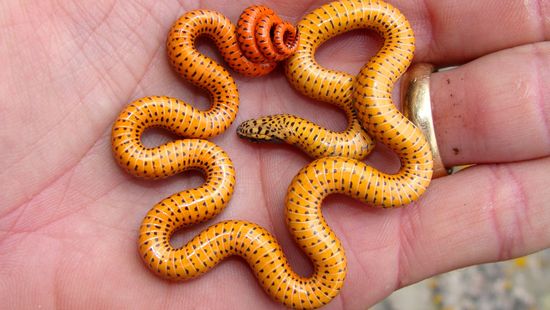
10 Cutest Snake Species That Have Us Squeeing
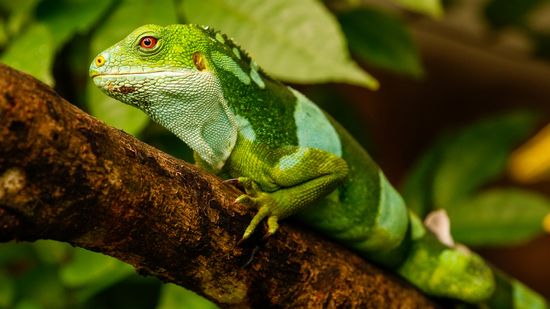
10 Colorful Lizards to Delight Reptile Lovers
Learn More
Some frogs blend into mud or leaves. Others look like someone spilled a paint set on them. These colorful frog species are so bright and beautiful, they seem designed to be seen.
By Nico Avelle
With its striking colors and unusual name, the Amazon milk frog is one of the most charismatic amphibians in the rainforest. This tree-dwelling species lives high in the canopy, often in water-filled tree holes, and makes its home in parts of Brazil, Peru, Ecuador, and French Guiana.
By Nico Avelle
Ah, the red-eyed tree frog—with its signature stare and bright-green body, these small frogs are icons of the tropics.
By Nico Avelle
Advertisement
Frogs have been hopping around the planet since the Early Triassic, making them one of the oldest extant amphibian lineages. With more than 7,000 frog species globally, they’ve adapted to nearly every environment on Earth, from tropical rainforest canopies to forest floor ponds.
By Nico Avelle
Frogs might seem simple, but under the skin, they're biological marvels. When you dig into frog anatomy, you’ll find structures that support a life both in water and on land. That duality makes them excellent subjects for comparing vertebrate systems—including our own.
By Nico Avelle
Frogs aren't at the top of the food chain. In fact, the list of what eats frogs is pretty long. These amphibians are on the menu for all kinds of animals across different ecosystems.
By Nico Avelle
Tiny, neon-colored, and hiding in plain sight on this list of poisonous frogs, these amphibians pack a punch way above their weight. Found mostly in the humid rainforests of Central and South America, poison dart frogs are famous for their toxic skin secretions and eye-popping hues.
By Nico Avelle
Advertisement
Most frogs hop away from danger. But the hairy frog? It brings its own weapons to the fight—literally. Known for its bizarre defense mechanism, this amphibian snaps its own bones to create claws that pierce through its skin. You read that right.
By Nico Avelle
The pixie frog is not the kind of frog you'd find hopping harmlessly around your garden pond. Also called the African giant bullfrog, this enormous amphibian is known scientifically as Pyxicephalus adspersus.
By Nico Avelle
Meet the African clawed frog, a fully aquatic amphibian that's part living fossil, part lab legend, and part ecological wildcard.
By Nico Avelle
If you've walked through a warm, humid forest in Puerto Rico or parts of Hawaii at dusk, you've likely heard the high-pitched "ko-kee" call of the coqui frog.
By Nico Avelle
Advertisement
You’ve probably heard them before you’ve seen them. The booming "jug-o-rum" call of the bullfrog (sometimes spelled bull frog) is a signature sound in North American wetlands.
By Nico Avelle
If you're thinking about frogs as gross, standoffish creatures, think again. White's tree frog is one of the friendliest, plumpest amphibians you’ll meet.
By Nico Avelle
The horned frog (also called the horned toad or ornate horned frog) belongs to the genus Ceratophrys, a group of amphibians native to South America.
By Nico Avelle
African dwarf frogs are tiny, fully aquatic amphibians that bring big personality to small aquariums. Native to the ponds and slow-moving rivers of Central Africa, the African dwarf frog is a popular choice for pet owners looking for low-maintenance animals with quirky behavior.
By Nico Avelle
Advertisement
The tree frog is a small, agile amphibian best known for its climbing ability and vocal nighttime habits. These frogs are typically found in warm, moist environments across the central and southeastern United States, though they can thrive in many habitats with a nearby water source.
By Nico Avelle
The Pacman frog, also known as the South American horned frog, is one of the most popular amphibians in the pet world—and for good reason.
By Nico Avelle
If you're out during a desert rainstorm and hear something that sounds like a squeaky toy, don't panic. You might be hearing the rain frog—a tiny, burrowing amphibian that spends most of its life hidden underground.
By Nico Avelle
Axolotls aren't just adorable; they're a marvel of biology and genetics. The different types of axolotl morphs showcase a range of stunning colors, patterns and genetic traits. From golden to glowing, here's a look at some of the most eye-catching axolotl morphs.
By Nico Avelle
Advertisement
Axolotl colors can be a little misleading; what you see online is wildly different from what exists in, well, the wild.
By Nico Avelle
Axolotl life expectancy might not sound like a burning topic, but once you learn what these amphibians can do, you’ll be hooked.
By Nico Avelle
Despite their charm and regenerative powers, axolotls face many threats in the wild.
By Nico Avelle
You might think frogs are small, croaky critters, but the biggest frog in the world could surprise you. Some amphibians grow to sizes that rival house pets. In this list, we're leaping into the world of giant frogs, examining the species that top the charts in length and weight.
By Nico Avelle
Advertisement
If you've ever seen a frog with skin so see-through you can spot its organs, you’ve stumbled into the world of the glass frog. Found mostly in Central and South America, these wild little amphibians belong to the family Centrolenidae. The glass frog's transparent skin makes it a marvel of evolution, not one of your average tree frogs.
By Nico Avelle
You can find these amphibians are found all over the world, from tropical rainforests to backyard ponds. But what do frogs eat?
By Mack Hayden
